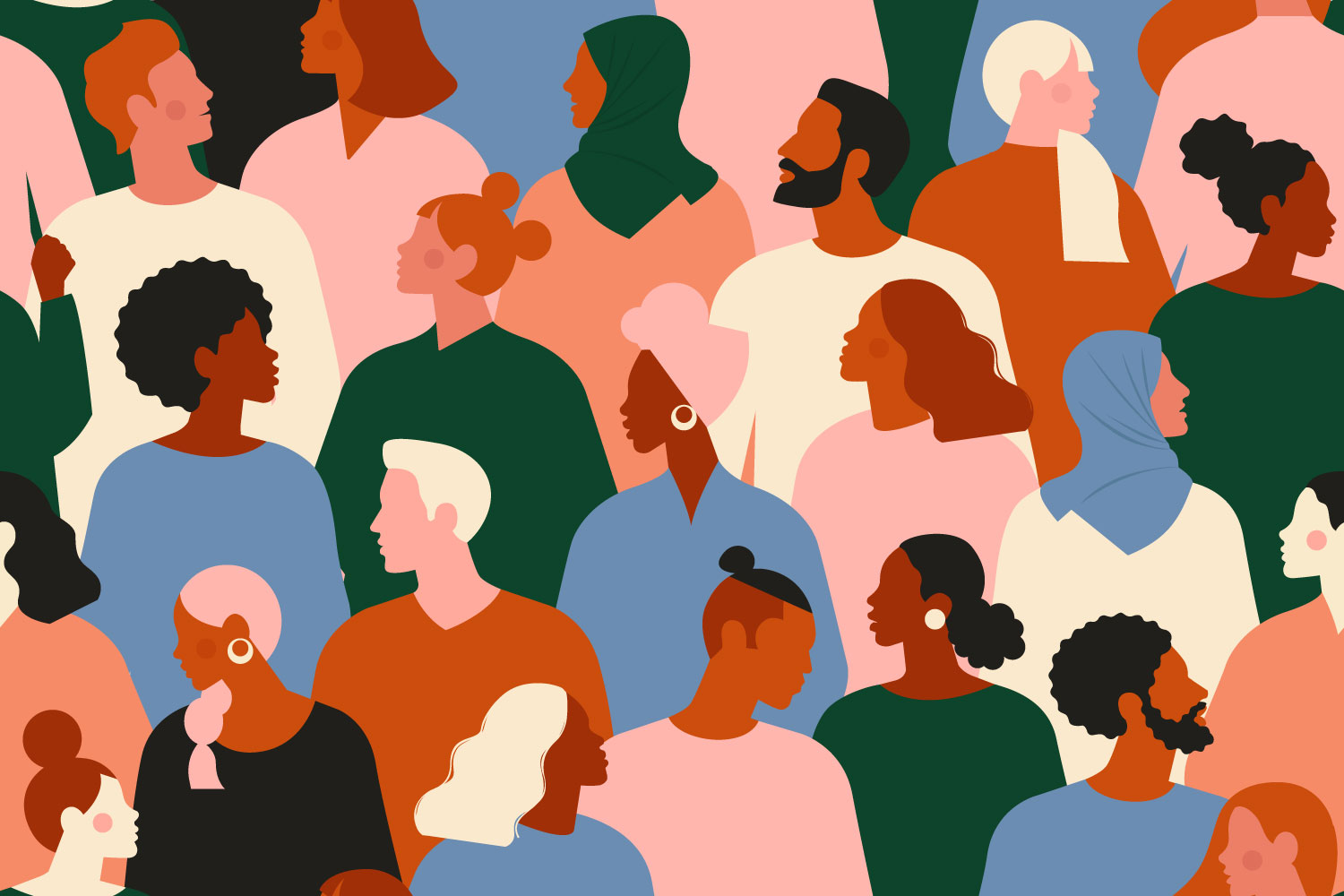Diversity & the Nonprofit Ecosystem: Part 2 in the 3-Part Diversity Series
Explore how diversity is applied the nonprofit sector as a whole — speaking to foundations, consultants, capacity builders, and observers.

The importance of diversity to the success of the entire nonprofit sector.
At a recent session on diversity at a national conference, most of the discussion circled around the issue of the relatively few people of color on the staff and boards of mainstream nonprofit organizations and foundations. But despite the worthy goals of the participants to diversify such organizations, one important outlook was notably absent.
Disappointingly, conference participants lacked a vision of diversity in the nonprofit sector as a whole, rather than simply within a given organization.
The nonprofit sector is a highly interdependent system and demands a whole-sector approach to including and nurturing all of its components. But it’s really hard to do this when:
- So many well-meaning nonprofit people fail to acknowledge and support large portions of the nonprofit system (organizations of color) and
- We don’t even know what to call many of the system’s various elements (the terminologies of race are problematic at best).
Nonprofit sector as Yellowstone
Here’s how I think of this dilemma. In Yellowstone National Park, a focus on protecting wildlife — especially large animals such as elk — has led to deforestation, erosion, and general decline of the ecosystem. Now that we understand wilderness as an interdependent, complex system, we realize that rabbits, birds, ferns, trees, butterflies and even mountain lions are needed for a healthy wildness that yes, also supports elk.
In a similar way, we know that industrial sectors are like ecosystems: for an area to thrive in technology or in pharmaceuticals, for instance, a healthy ecosystem needs not only large manufacturers, but innovative startups, parts suppliers, a creative and skilled workforce, nearby universities, and a functional capital market.
Our nonprofit sector — which produces so much value for society — is no different. We need to pay attention to the health of the ecosystem, not just the elk; to the health of the sector, not just to certain types of organizations.
One underlying point of view that limits our ability to think in terms of the sector as a whole is the unspoken assumption that nearly all nonprofit organizations are predominantly white (or “majority”) organizations that ought to be more diverse in terms of race (or ethnicity, gender, physical ability, sexual orientation, economic background, and so forth).
Strikingly omitted is recognition of the significant number of nonprofits that are not predominantly white (and so on). Many nonprofit people fail to recognize organizations grounded in specific communities. But in fact, the Urban Institute reports that one in six California nonprofits has staff comprised 100% of people of color.
Failure of terminology
It’s hard to appreciate and discuss a complex topic without a good set of terms to work with. In the emotionally charged arena of race and equity, we don’t have terms that either are accurate or agreed upon. Within the disabilities movement, it’s possible to distinguish between “people with disabilities” and “able-bodied people,” and within the gay/lesbian movement, terms such as gay, lesbian, heterosexual, LGBTQ and others may not be perfect but allow for paragraphs that are not overly burdened with terminology problems.
But when speaking of race, “minority” is a poor synonym for people of color, partly because in many parts of the country there is no race that comprises 50% or more of the population. “Communities of color” is not only grammatically awkward, it isn’t inclusive enough in situations such as immigration, where many disadvantaged immigrants such as Russians, are white. Terms such as “marginalized communities,” “underserved communities,” and “oppressed communities” are jargon well understood by “insiders” and alienating to “outsiders. In this article we use the term “disadvantaged communities,” although it’s not much better.
What’s more, the term “diversity” means variety, and as a result, organizations that are 100% women or 100% people of color can be characterized as “not diverse,” as the Urban Institute report does.
But we’re not really concerned with “diversity”… meaning “varied.” The discussion is really about bringing people of color and people from disadvantaged communities into the staffing and leadership of nonprofit organizations and the nonprofit sector.
Organizations of color: present or absent?
Recently I had a chance to analyze the grantmaking of a community foundation — here we’ll call it the “ABC Foundation” — in a geographic area that is 56% white, 35% Latino/Hispanic, and 9% other. In other words, whites make up just over half the population, and just over a third of the population is Latino/Hispanic, as shown in the chart to the right.
A startling pattern at this foundation is the infrequent mention of organizations based in communities of color. When looking at the nonprofits to which grants were awarded, not a single one was awarded to an organization based in the Latino community or any other community of color:
Among foundations and mainstream nonprofit infrastructure leaders, the lack of awareness or recognition of organizations of color is remarkable. Recently I asked the head of a nonprofit association in a metropolitan area that is 64% African American to tell me the local African American nonprofits that he admires. After some rueful shaking of his head, he admitted that there were none, but that he wasn’t sure he would know if there were any. What neither of us knew was whether there were in fact strong African American organizations of which he was not aware, or whether there were no such strong organizations.
Further, what was deeply disappointing was that he didn’t see it as a priority for his association either to find out what vibrant African American organizations might exist, or see what his association might do to strengthen existing African American groups. In the ABC Foundation, the same is true: why isn’t it a priority for them to be building Latino organizations?
Talking in code at foundations
ABC Foundation’s grants dockets show they are committed to helping low-income communities. But although both staff and board knew they made grants to helping Latino communities, this was seldom mentioned in the grant write-ups.
This example illustrates behavior seen in many places. It reflects an under-studied area that could benefit from more research and is not meant to stand in for scholarship such as the worthy report recently published by the Urban Institute, Measuring Racial-Ethnic Diversity in California’s Nonprofit Sector.
Why are foundations on one hand so committed to helping low-income communities, yet at the same time so reluctant to identify them explicitly as communities with high percentages of people of color? And what are the broader implications of doing so?
Some foundation staff say that using terms such as “Eastside” or “Cameron area” are more neutral terms and that the board and others know those to be communities with many people of color. In effect, there isn’t a need to say it.
Inadvertently, though, this side-stepping of explicit racial and ethnic mention has a deleterious impact: it sends an implicit message that low-income communities and communities of color are largely synonymous. Which they aren’t. We mischaracterize and hurt both low-income white people and communities of color (of all incomes) by doing so. We may have forgotten that 79% of people who are poor are white.
Reasons for increased diversity in the sector
Acknowledging organizations of color and sharpening our language are two steps that help us to look more fruitfully at why it is important for the nonprofit sector as a whole to increase its diversity. In Part 1 of this series, we discussed the compelling reasons for increasing diversification in individual organizations:
- A mission reason: We believe the nonprofit sector as whole should be improving life for all communities.
- A business reason: The nonprofit sector needs people of color and others as donors, as volunteers, as workers, as leaders, and as customers, funders, and patrons. The sector is also less likely to be attacked, and more able to defend itself, when it has a greater cross-section of the population in its leadership.
- A responsible corporation reason: Just as every sector has a responsibility towards the environment, every sector has a responsibility for fair employment, for community-wide prosperity, and for making services and products accessible to people with disabilities.
- A definitional reason: Community nonprofits are characterized by being part of their communities as well as serving their communities. Holding ourselves accountable to our communities requires our sector as a whole be accountable, as well, including by involving people of color in our leadership.
Keep on pushing
At the ABC Foundation, a discussion about strengthening the local Latino community did lead to a discussion about the importance of healthy Latino organizations.
The staff and board were daunted, though, by the lack of a known path on how to help such organizations emerge and grow into leadership roles which would benefit the entire community. Likewise, many foundations and capacity-building organizations point to a lack of organizations of color that meet their eligibility guidelines, or that are strong enough to see as partners.
In both cases, the difficulty of making change shouldn’t keep us from trying to do so. In fact, the hallmark of the nonprofit sector is that we take on making huge, long-term change with remarkable courage and verve. Changes in women’s rights and environmental consciousness are just two of the ideas that have been incubated in and driven by the nonprofit sector.
If there is one part of our nonprofit ecosystem that most needs our attention for the future, is it not the building of strong organizations based in, led by, representing, and supporting communities of color?
See also:
- A Fresh Look at Diversity and Boards : Part 1 of 3
- Recruiting for Diversity : Part 3 of 3
- The Nonprofit Board’s Role in HR
Articles on Blue Avocado do not provide legal representation or legal advice and should not be used as a substitute for advice or legal counsel. Blue Avocado provides space for the nonprofit sector to express new ideas. Views represented in Blue Avocado do not necessarily express the opinion of the publication or its publisher.











Diversity, YES! I whole heartedly embrace diversity. Our facility has worked aggressively to serve our community’s growing diverse community. As a matter of fact this city is a leader in welcoming refugees and immigrants. And our facility was 1 of the city’s’s first to hold workshops, open houses and aggressively go into our diverse neighborhoods. (Community grocery stores are the hubs of our diverse communities so much better than churches and even organized institutions) We even have provided tours in 10 different languages and our announcements are in 5 different languages.
My issue is the challenge of a diverse board here in the middle of the heartland where white Europeans landed. Our institution is 100% funded by gifts and earned revenues, we receive NO tax dollars for anything. Consequently it is the responsibility of our board to raise funds in our community. And donors give to people they know. And the people with the money in our community is not our diverse community. With only 20 board members – all who are responsible for finding funds for the zoo it is very challenging for us to find a non-white person in our community with access to money.
Yes, I use the term non-white as that is the easiest term. And yes, our society falls constantly over its tongue worried that we are offending someone. I have an adopted son who is 50% European and 50% African. He identifies himself as black, period. And technically he would be a African European NOT an African American. Yes, he was born on USA soil but that is irrelevant here. Again, I blather on a tangent.
Simply stated we are afraid to have open and honest conversations and to be frank. And funders are confused too. They either over-emphasize "diversity" on the board or they ignore it. A foundation has yet to ask if I have a gay man or a lesbian on my board. They also don’t ask about religion. So just what the heck is "diversity".
We white people are cowards and are confused and we are intimidated by "diversity" because there is no one common definition or anything. Plus any individual is frightened by someone who is not just like them. Even with a black family in the White House we stumble, speak in whispers and just keep our heads down.
Thanks for letting me ramble.
i have to comment because I am white and I am nothing like what you are describing. i don’t like being lumped in with “we white people”. I am not intimidated by the word diversity. Right now I am trying to get the executive director of my organization to persuade the all-female board of directors to hire a male board member. And I really hope he is black.
When you talk about your experiences you should not say “we”. You do not represent me. (I am assuming I get to be included in your “we” because I am white). Talk about perpetuating a stereotype. You say “Simply stated, we are afraid to have open and honest conversations and to be frank.” That is not the case with me. When I have been in the rare situation with a black person who has insinuated to me that I am racist (and it is rare), I ask them what they know about racism in Africa. I ask them to tell me what they think about what happened in Rwanda in 1994, what they think about the religious war conflict in Nigeria, and the lives it is taking. I ask them how well they know the “I have a dream” speech, and if they know where MLK Jr. was shot. Do they know who Medgar Evers is? Guess what? They don’t. Guess what, you probably don’t either.
If YOU PEOPLE, and I mean black, white, pink, orange, purple, blue, and green, would get your heads out of your butts and learn what is really going on, and arm yourself with some factual information that could enable you to have an intelligent conversation with someone about race and diversity, you would not have to stumble, whisper, or keep your heads down. But, until you do decide to put some effort into gaining some of the required knowledge, please, for all of our sake, keep your mouth shut. And your fingers off of the keyboard.